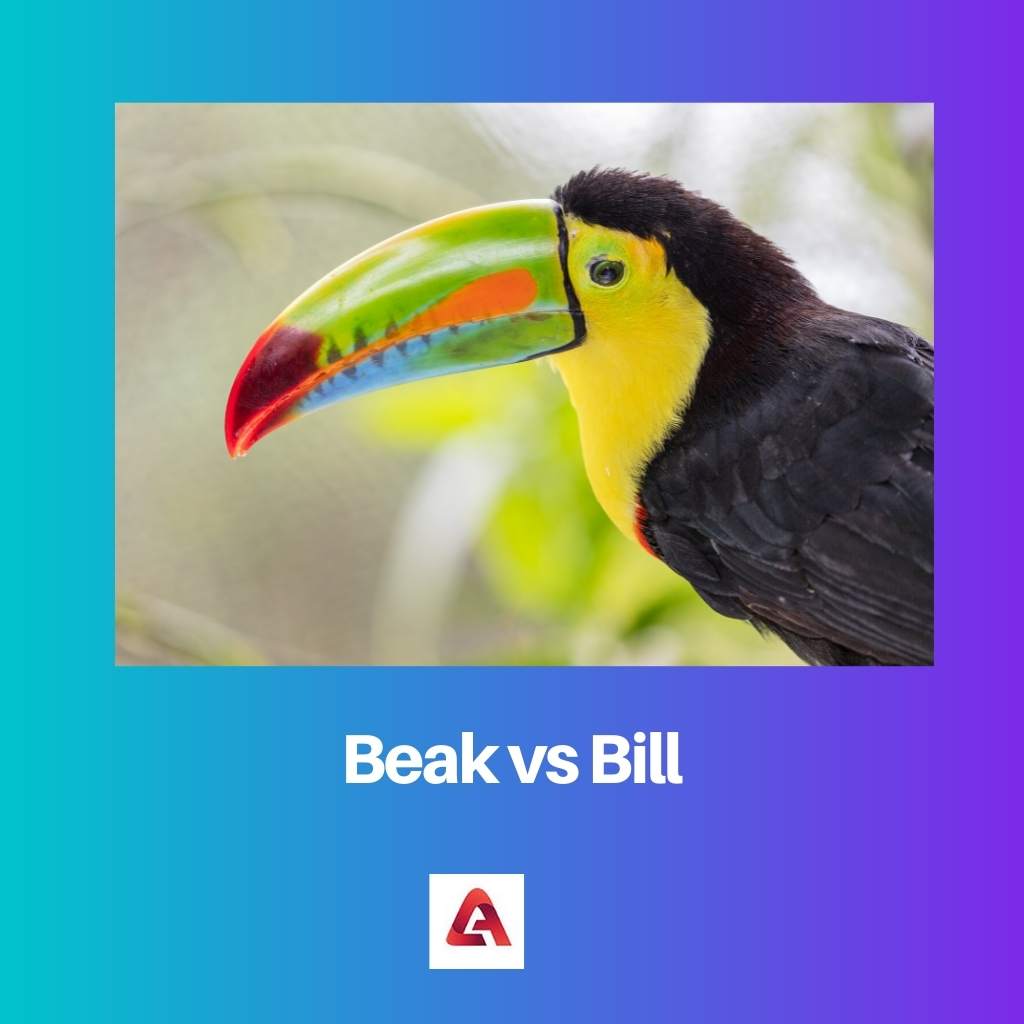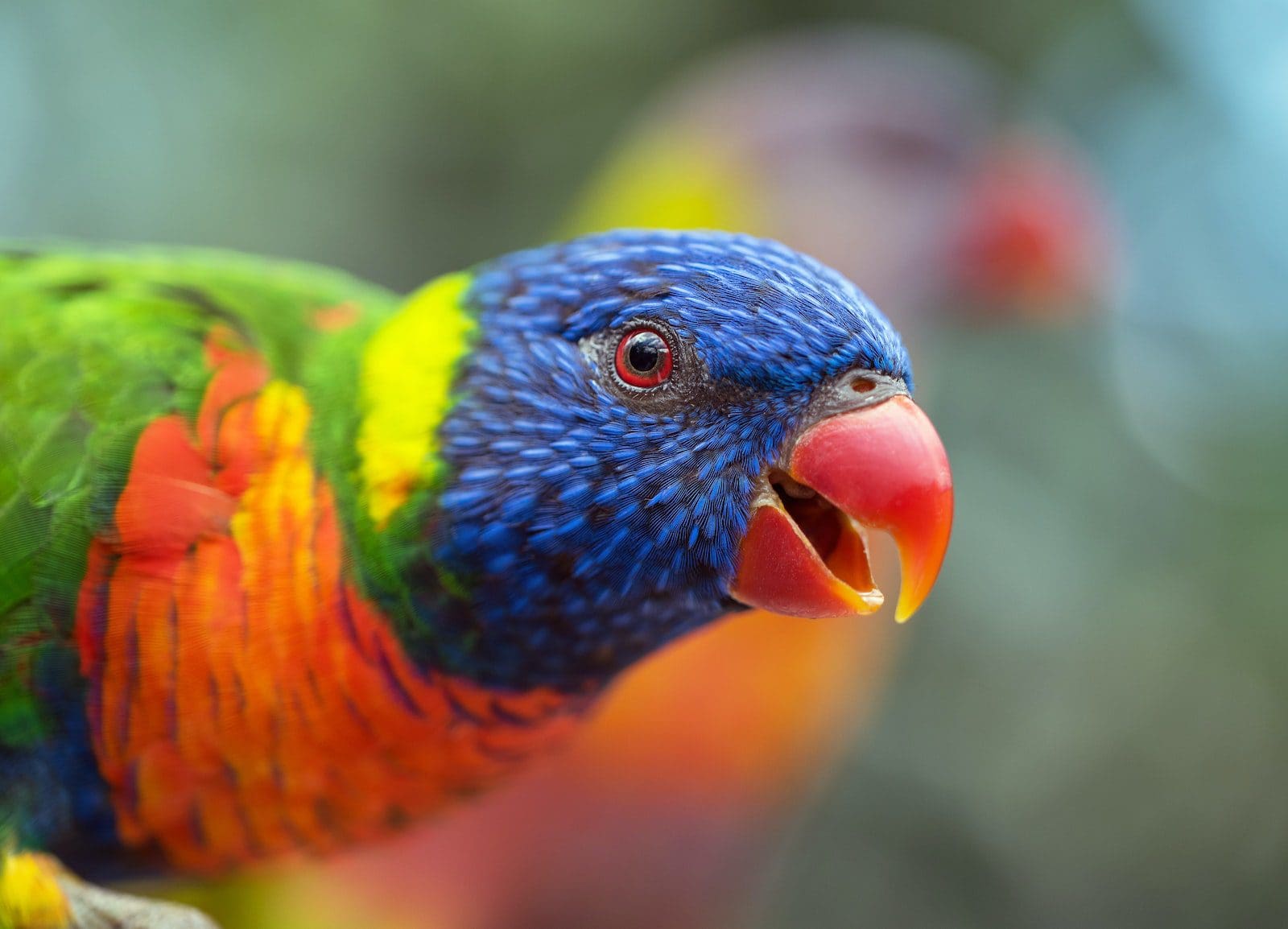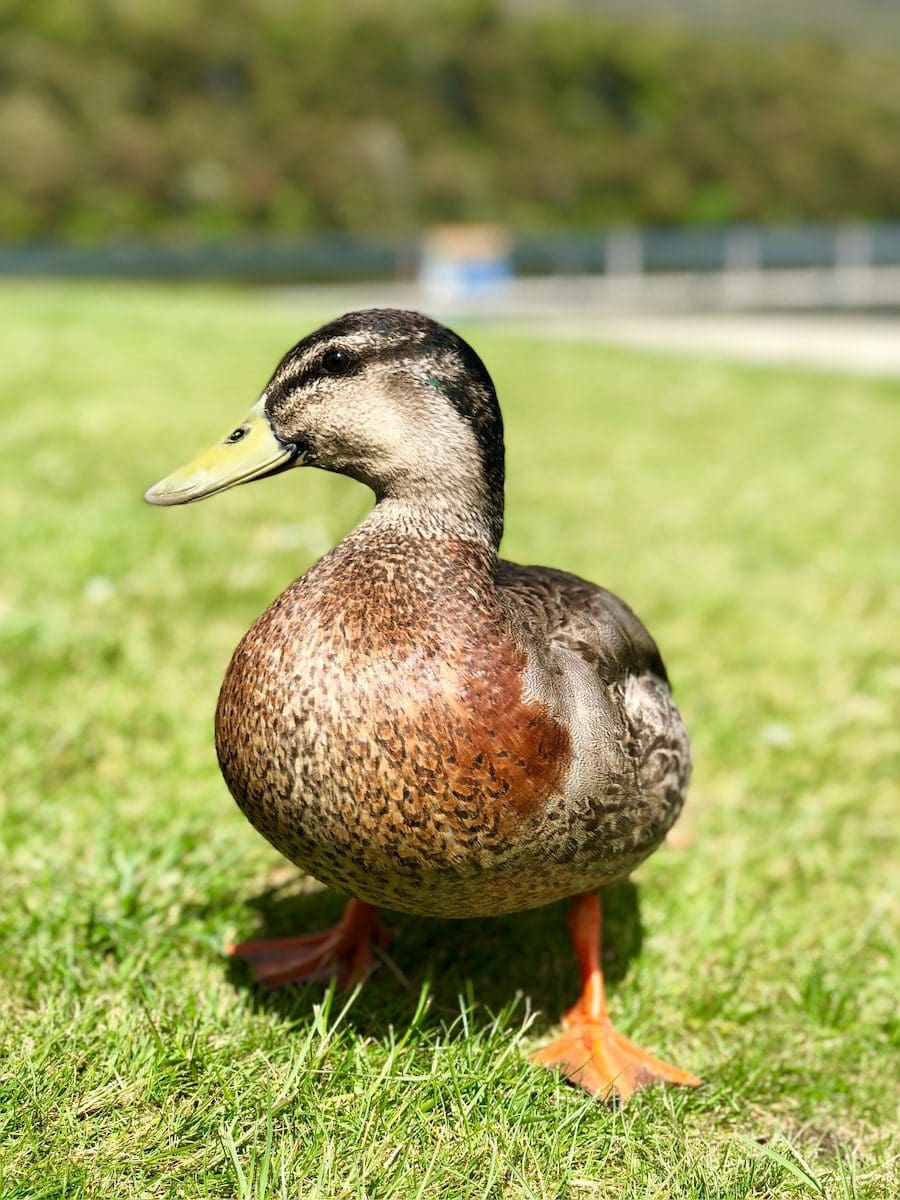Beak and bill both belong to the anatomy of birds. Most birds use it to eat and feed their young children. People use these two terms as synonyms, but they are not.
Key Takeaways
- A beak is a hardened, pointed structure used for pecking and grasping, while a bill is a softer, broader structure used for scooping and straining food.
- Beaks are found in birds, while bills are also found in some mammals and fish.
- Beaks can vary in size and shape depending on the bird species, while bills have specialized adaptations for specific feeding behaviors.
Beak vs Bill
The beak refers to the hard, curved structure that covers a bird’s upper and lower jaws and is composed of a bony core covered by a horny sheath made of keratin. The bill specifically refers to the projecting structure at the front of the beak that is used for grasping and manipulating food.

Beaks have many functions and purposes, but their primary function is feeding. Beaks’ structure can help to identify the species of birds. Hooked bills are referred to as beaks.
Bills are flat-ended beaks commonly seen in birds that feed themselves on water creatures. Their bills have a strong grip to get hold of slippery water creatures. Bills tend to be incredibly strong.
Comparison Table
| Parameters of Comparison | Beak | Bill |
|---|---|---|
| Shape | Beaks have pointed and rounded ends. | Bills have flat and rounded ends. |
| Prey | Birds with beaks are birds of prey. | Birds with bills do not prey. |
| Feeding habit | Birds with beaks mainly eat meat. | Bill is commonly seen in birds that eat water creatures. |
| Birds | Some of the birds with beaks are hawks, eagles and owls. | Some of the birds with bills are pigeons, hummingbirds, flamingos and waders. |
| Sharpness | Beaks are more pointed than bills. | Bills are not pointed. They are rounded. |
What is Beak?
Beaks are composed of a particular substance that is called keratin. It has a layer of the epidermis and also has two holes. These holes are visible at the top, and these are called nares.
Just like humans, even birds can not move their upper jaw. The lower jaw does all the work. A Beak has many jobs to do.
The beak is also the only tool for defence. They build nests and communicate with the help of their beaks. They keep themselves clean and set their feathers with the help of their beaks.
Even though beaks have many functions, the most vital one is feeding. With the help of beaks, birds not just only feed themselves but also their young ones.
Birds of prey like hawks, eagles, and vultures have hooked beaks, and they use them to rip open flesh. But also, birds like nectar eaters have long, hollow beaks, and they use them to suck the nectar from the flowers.

What is Bill?
Bill has flat and round ends. Bills also have the primary function of feeding. The bill has two parts, one is the bony skeleton of the jaws, and the other is the layer of flesh that covers the skeleton.
Bill is common in birds like flamingos and pelicans. Their bills allowed them to catch food from water easily. Their bills keep a solid grip on their slippery target.
Bills are primarily present in small birds but are surprisingly strong. Birds like finches use their bill to open seeds, and European hawfinch can crack open cherry and olive pits with the strength of their bills.
But again, birds like parrots and toucans do not have such solid bills. They instead slice fruits with the help of their bills.
Bills have many shapes and sizes. The bill’s size and shape depend on the bird’s species and nature. Bills also act as a tool of defence.

Main Differences Between Beak and Bill
- On the one hand, birds with beaks feed themselves with meat, and on the other hand, birds with bills eat water creatures.
- Birds like hawks, eagles, and owls have beaks, and birds like pigeons, hummingbirds, flamingos, and waders have bills.

- https://pubs.er.usgs.gov/publication/5224268
- https://onlinelibrary.wiley.com/doi/abs/10.1111/mec.13868

Very insightful information. I’m happy to have learned so much from this article!
I agree, Matthew.
I’m glad I’m not the only one who found it so informative. It’s a lot to take in.
The comparisons are very helpful and the content is presented logically. A great read!
The diagrams are so helpful for visual learners.
One of the best articles I’ve read on this topic. Really thorough!
Never thought I’d find bird anatomy so intriguing!
Agreed, Chloe! I’m amazed.
Fascinating in-depth look at beaks and bills!
It’s really comprehensive.
I’m so impressed with the level of detail!
Very informative! I’m so impressed by how much I’ve learned.
I feel the same way, Lewis. It’s great to expand our knowledge.
The content is very interesting and covers a lot of ground.
I’ve learned a lot about birds today.
I’ve never thought about the differences between beaks and bills until this article. Well done!
I agree, Craig. It’s really eye-opening.
The post is well written and easy to understand. Keep it up!
I second that! Great job!
Yes, congratulations!
It’s exciting to learn the importance of beaks and bills in birds.
I know, right? It’s so intriguing!
The content is well researched and the details are quite fascinating!
It’s an essential reference for birdwatchers!